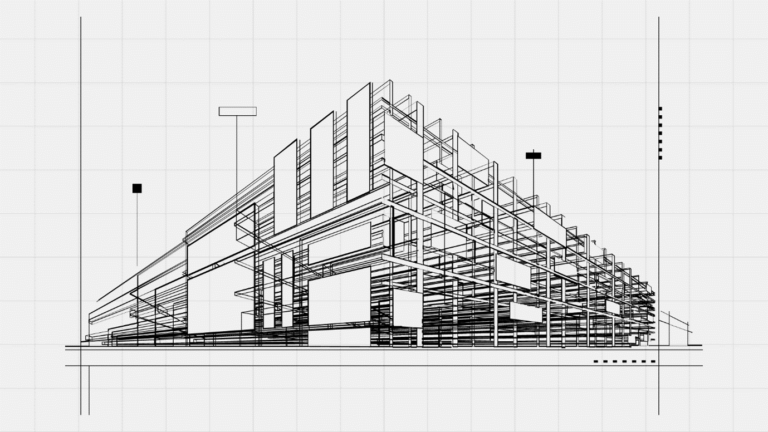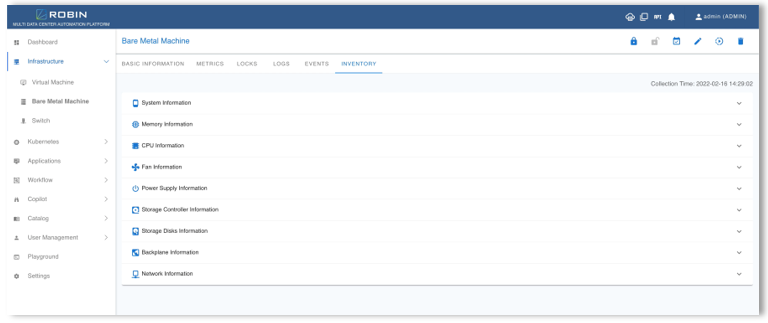Unveiling the Rakuten Orchestrator Architecture
A Symphony of Modern Telecommunication
Overview
In the dynamic world of telecommunications, the Rakuten Orchestrator Architecture stands as a beacon of innovation and efficiency. As the backbone of Rakuten Mobile’s cutting-edge infrastructure, it integrates multiple facets of network management into a cohesive, scalable, and highly automated system. Let’s dive into the key components of this architectural marvel and understand how they work in harmony to deliver unparalleled service quality and operational efficiency.

RAKUTEN ORCHESTRATOR ARCHITECTURE

Life Cycle Management: The Conductor of Operations
At the heart of the Rakuten Orchestrator is Life Cycle Management. This component ensures the seamless deployment, termination, and upgrade of network functions. It handles scaling and healing processes, adapting to the ever-changing demands of a mobile network. By automating these critical operations, Rakuten ensures that their network remains robust and responsive to user needs. Life Cycle Management also provides version control, which is crucial for tracking changes and ensuring that all components are up-to-date. This systematic approach minimizes downtime and enhances the network’s resilience.
Moreover, Life Cycle Management plays a pivotal role in resource optimization. By efficiently managing resources, it helps reduce operational costs while maintaining high performance. The automation of these processes not only improves efficiency but also allows engineers to focus on more strategic tasks, driving innovation and continuous improvement.
User Management: Multi-Tenancy and Security
User Management in Rakuten Orchestrator emphasizes security and efficient user handling. With features like Multi-Tenancy and Role-Based Access Control (RBAC), it allows multiple users to operate within the system securely. Integration with Active Directory (AD) and Keycloak ensures that authentication and authorization processes are streamlined, providing secure and flexible access management. This approach ensures that only authorized personnel can access sensitive information and critical system functionalities.
The importance of user management cannot be overstated in a multi-tenant environment where different users have varying access needs. RBAC allows for the assignment of specific roles and permissions, ensuring that users can only access the functions and data necessary for their roles. This not only enhances security but also simplifies the management of user privileges.
In addition to security, user management also enhances operational efficiency. By automating user provisioning and de-provisioning, it reduces the administrative burden on IT staff. This ensures that new users can be quickly onboarded and that access rights are promptly revoked when users leave the organization, minimizing security risks.
High Availability: Ensuring Continuous Service
High Availability is crucial in telecommunications, where downtime is unacceptable. Rakuten Orchestrator achieves this through Multi-Site Clusters and Geo-Redundancy. By distributing the load across multiple data centres and ensuring redundancy, the system guarantees uninterrupted service, even in the face of localized failures. This approach not only enhances reliability but also improves disaster recovery capabilities.
The use of Multi-Site Clusters ensures that the network can withstand failures in individual data centers without affecting overall service availability. Geo-Redundancy further enhances this by replicating data and services across geographically dispersed locations. This ensures that even in the event of a catastrophic failure in one region, services can continue to operate from another location.
Additionally, High Availability mechanisms include automated failover processes. These processes detect failures and automatically switch to backup systems, ensuring continuous operation. This level of automation minimizes downtime and ensures that users experience seamless service even during maintenance or unexpected outages.
Observability: Monitoring and Management
The Observability component provides comprehensive monitoring capabilities. It employs liveness and readiness probes to ensure that services are functioning correctly. Metrics collection, logging, and alert systems keep the operators informed about the health and performance of the network, enabling proactive management and quick issue resolution. Observability tools also help in capacity planning and performance optimization, ensuring that the network can handle increasing loads without degradation in service quality.
Effective observability is critical for maintaining high service levels. By continuously monitoring system performance and health, operators can identify potential issues before they escalate into major problems. This proactive approach to network management ensures that issues are addressed promptly, minimizing the impact on users.
Furthermore, observability tools provide valuable insights into system performance. By analyzing metrics and logs, operators can identify trends and patterns that indicate potential bottlenecks or inefficiencies. This data-driven approach to network management allows for continuous optimization, ensuring that the network operates at peak performance.
Distributed Engine: Powering the Network
The Distributed Engine is the powerhouse of Rakuten Orchestrator. It includes components like Batch and BOW Managers, Worker Groups, and Workflow Managers, which collectively manage the distribution and execution of tasks. The provisioner and priority lanes ensure that critical tasks are prioritized, while the active inventory and policy management maintain optimal network performance. This distributed approach ensures that the network can handle high volumes of tasks efficiently and reliably.
The Distributed Engine’s architecture is designed to scale horizontally, allowing for the addition of more resources as demand increases. This scalability is essential for handling the dynamic and often unpredictable nature of telecommunication workloads. By distributing tasks across multiple worker groups, the system can process large volumes of data and requests without becoming a bottleneck.
In addition to task management, the Distributed Engine also supports advanced scheduling and orchestration capabilities. Workflow Managers ensure that tasks are executed in the correct sequence and that dependencies are managed effectively. This level of coordination is crucial for maintaining the integrity and performance of complex network operations.

Note: This is an inventory reference from Rakuten Orchestrator Console.
Element Management: Keeping Track of Network Elements
Element Management encompasses the discovery, health monitoring, and inventory of network elements. It ensures that each component of the network is accounted for and functioning correctly. Healing, Life Cycle Management, Schema, Metrics, Policy, and Dashboard functionalities provide a holistic view and control over the network’s elements, ensuring seamless operation. By maintaining an accurate inventory and monitoring the health of network elements, Rakuten can quickly identify and address issues, minimizing downtime and service disruptions.
The discovery process in Element Management is automated, ensuring that all network elements are detected and added to the inventory. This real-time inventory management is crucial for maintaining an up-to-date view of the network’s state. Health monitoring tools continuously check the status of each element, providing alerts when issues are detected.
Healing mechanisms are also a critical part of Element Management. These mechanisms automatically trigger corrective actions when problems are detected, ensuring that the network can recover from failures without manual intervention. This self-healing capability enhances the network’s resilience and reliability.
Infrastructure Orchestration: Bridging Physical and Virtual
This component bridges the gap between physical infrastructure and virtual network functions. Infrastructure Orchestration manages servers, physical network functions, and devices, ensuring that the underlying hardware supports the virtualized services effectively. This integration is essential for maximizing the efficiency and performance of both physical and virtual resources.
Infrastructure Orchestration includes tools for provisioning and managing physical servers and network devices. These tools automate the deployment and configuration of hardware, ensuring that it is set up correctly and consistently. This reduces the risk of configuration errors and improves the speed and efficiency of infrastructure deployment.
In addition to managing physical infrastructure, this component also supports the orchestration of virtual network functions (VNFs). By integrating physical and virtual resources, Rakuten can optimize resource utilization and ensure that services run efficiently across different environments. This hybrid approach provides the flexibility to adapt to changing demands and leverage the best of both physical and virtual worlds.
Cluster Orchestration: Managing Containers at Scale
Cluster Orchestration leverages Kubernetes to manage containers across on-premises and cloud environments, including Azure, AWS, OpenShift, and Rancher. This ensures that applications are deployed consistently and efficiently, regardless of the underlying infrastructure. Managed Kubernetes services further simplify the management of these clusters, allowing Rakuten to focus on delivering high-quality services.
Kubernetes provides a powerful platform for managing containerized applications, offering features like automated deployment, scaling, and load balancing. By using Kubernetes, Rakuten can ensure that applications are deployed in a consistent and repeatable manner, reducing the risk of deployment errors and improving operational efficiency.
Cluster Orchestration also supports hybrid and multi-cloud environments, providing the flexibility to deploy applications across different cloud providers and on-premises infrastructure. This approach enables Rakuten to leverage the best features of each environment and ensure high availability and performance for its applications.
Service Orchestration: Automating Service Delivery
Service Orchestration automates the coordination and management of services. It handles application runtimes like Docker, Helm, Linux, KVM, and LXC, ensuring that applications are deployed and managed efficiently. This component also oversees applications ranging from enterprise services to 5G/4G, RAN, CORE, EDGE, and Data, ensuring that each service runs optimally.
Service Orchestration simplifies the management of complex service workflows, automating tasks such as deployment, configuration, and scaling. This automation reduces the administrative burden on IT staff and ensures that services are delivered quickly and reliably.
In addition to managing application runtimes, Service Orchestration also supports the orchestration of network services. This includes the deployment and management of core network functions, radio access networks (RAN), and edge computing resources. By automating these processes, Rakuten can ensure that its network services are delivered with high performance and reliability.
Conclusion
The Rakuten Orchestrator Architecture is a testament to modern network management’s power and elegance. By integrating robust life cycle management, secure user management, high availability, comprehensive observability, a powerful distributed engine, detailed element management, seamless infrastructure orchestration, efficient cluster orchestration, and automated service orchestration, Rakuten has crafted an architecture that meets the demands of today’s telecommunications landscape.
This orchestration not only enhances operational efficiency but also ensures that Rakuten Mobile can deliver high-quality, reliable services to its users. As we look to the future, the Rakuten Orchestrator stands as a model of innovation, demonstrating how complex networks can be managed with precision and ease.
Through this architectural masterpiece, Rakuten is not just keeping pace with the rapid advancements in telecommunications but setting the standard for what is possible. As the telecommunications industry continues to evolve, the Rakuten Orchestrator Architecture will undoubtedly play a pivotal role in shaping the future of network management.